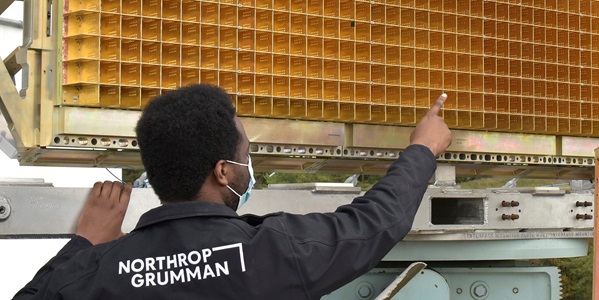Busting Myths about Military Technology and the Electromagnetic Spectrum

By Kelly McSweeney
There are many misconceptions about electronic warfare, which uses the electromagnetic spectrum or directed energy to attack and defend against enemies. The electromagnetic spectrum is a range of wavelengths or frequencies covering all types of electromagnetic radiation, such as radio waves, visible light, microwaves and more. Electronic warfare involves controlling this spectrum.
Here, we'll bust myths about the broad range of electronic warfare techniques that can be used to detect threats, hide from threats and jam signals.

Myth #1: Electronic Warfare Is Just another Name for Jamming
"People mistakenly think that electronic warfare is synonymous with jamming when it’s so much more. For example, protecting our advanced radars and sensors from enemy jamming, transmitting radio frequency (RF) cyber-attacks, and intercepting enemy signals – there’s such a large breadth to the electronic warfare mission area," says John "JJ" Thompson, director of strategic planning at Northrop Grumman.
Electronic warfare (EW) allows us to achieve near real-time system adaptation, use digital electronics for multifunction, and have seamless interoperability while acting with speed. It increases the burden on the adversary, imposing cost and creating chaos to help build advantage across air, sea, land and space.
"You want to make sure you see the threat before it sees you," explains Kyle Zars, who oversees electronic warfare systems at Northrop Grumman. He adds, "You can do a tremendous amount of electronic warfare without ever jamming. Jamming is just one piece of the puzzle."
Myth #2: You Have to Emit a Signal to Track an Adversary
EW systems can detect radio frequency (RF) energy without ever emitting a signal. It is possible to detect a signal and even get specific geolocation information this way. Communications systems and radars must emit to perform their functions, EW systems can just listen.
“The race to win a targeting advantage has existed for decades. Passive Precision Targeting gives our warfighters that advantage in the race to stay ahead,” says Thompson.
"Fundamentally, if you're going to detect anything in the electromagnetic spectrum, you have to have a sensor that is tuned to detect specific things, and that spectrum varies over frequency," Zars says.
Therefore, depending on what your threats are, you have to have the proper frequency coverage. Adding to that challenge, threats are constantly evolving, so sensors need to be upgraded to cover different parts of the spectrum.

Myth #3: If a Platform Is Jamming, You Can't Do Anything Else at the Same Time
Onboard interference is a challenge, but that doesn't mean you can't continue looking for threats while you are also busy jamming. There are a few options. You can temporarily turn your receiving system off when your radar is on, or you can filter to only look at a specific frequency range. The best way, according to Zars, is to integrate communication between your electronic warfare system and your radar on a pulse-by-pulse basis. This way, both systems know exactly what the other is doing. In other words, you can specifically filter out your outgoing radar (jamming) signals from any other signals you might receive.
"We ensure that when that the customer is jamming, they’re not blind," Zars explains. "We can continue to survey the environment and make sure we can see radar pulses around it."

Myth #4: Electronic Warfare Is Static
The truth is electronic warfare can be just as dynamic and intelligent as other types of defense. It goes both ways.
"Just as two armies maneuver against each other in the field, this is going on in an RF world," Thompson says. “Much like soldiers need to use camouflage, and search for a concealed adversary, today’s military technology has to conceal outgoing RF signals, uncover hidden RF signals and identify any unknown signals in the environment.” Not only do we have the ability to jam, but some advanced electronic warfare systems can also use intelligently controlled responses. Cutting-edge systems have cognitive abilities that identify when to jam, and they continue to learn over time.
Myth #5: It's Just Like Consumer Electronics
While the basic mechanism of electronic warfare systems isn't all that different from the sensors in consumer electronics, the stakes are much higher, and the challenges are far greater. These systems are installed in aircraft and other vehicles that operate under extreme conditions, so the sensors have to withstand broad temperature extremes and strong vibration profiles. The design and testing are much more rigorous than consumer technology.
"If your phone fails, you go get a new one," says Zars. "If one of our systems fails, lives are at risk. They depend on our systems to complete their missions safely and effectively."
Learn more about our people and life at Northrop Grumman, and check out our career opportunities to see how you can help define possible.
More Innovation Stories
Read all stories about advanced technology and innovation >>


